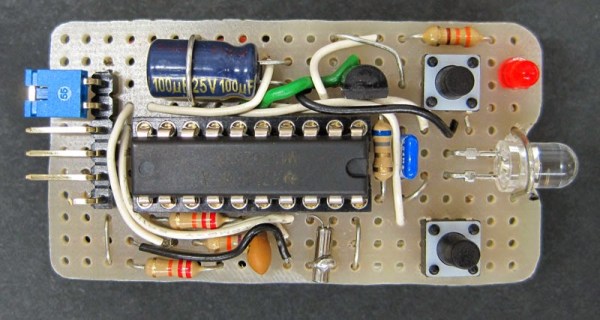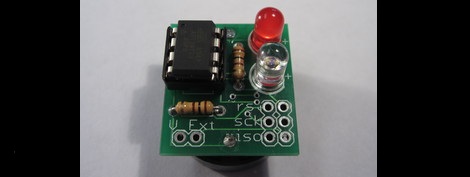When choosing weapons to defend yourself in the next zombie apocalypse, dart jamming whilst firing your Nerf Gun can be a deal-breaker. This clogging is an issue with many “semi-automatic” Nerf Guns. When our trigger-happy fingertips attempt to shoot a dart that hasn’t finished loading into the firing chamber, the halfway-loaded dart folds onto itself and jams the chamber from firing any more darts. The solution, as intended by Nerf, would be to open the chamber lid and manually clear the pathway. The solution, according to [Technician Gimmick], however, is active sensing, and the resulting “smart” dart gun is the TR-27 GRYPHON.
To prevent jamming from occurring altogether, [Technician Gimmick] added a trigger-disable until the dart has fully loaded into the firing chamber. An IR LED, harvested from a mouse scroll wheel, returns an analog value to the microcontroller’s analog-to-digital converter, allowing it to determine whether or not a dart is ready for firing. The implementation is simple, but the results are fantastic. No longer will any gun fire a dart until it has completely entered the chamber.
The TR-27 GRYPHON isn’t just a Nerf Gun that enables “smart” dart sensing. [Technician Gimmick] folded a number of other features into the Nerf Gun that makes it a charmer on the shelf. First, a hall-sensor array identifies the current cartridge loaded into the Nerf Gun and it’s carrying capacity. To display this value and decrement appropriately, [Technician Gimmick] added a dual-seven segment display, a trick we’ve seen before. Finally, a whopping 3S LiPo battery replaces the original alkaline batteries, and the voltage-reducing diodes have been cropped, enabling a full 12.6 Volt delivery to the motors at full charge.
We’re glad to see such a simple trick go such a long way as to almost entirely eliminate Nerf dart jams. For all those braving the Humans-Versus-Zombies frontier this season, may this clever trick keep you alive for just a bit longer.
Continue reading “Active “Dart-Sensing” Makes Your Nerf Gun Smarter”
















